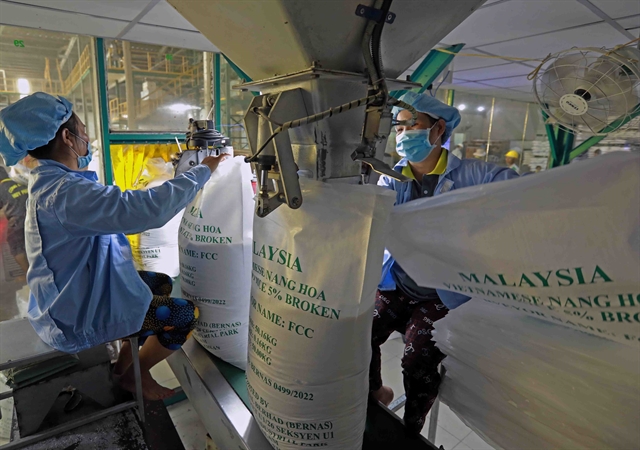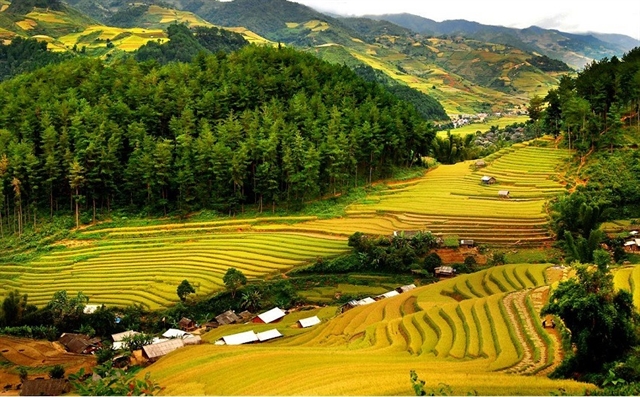 Economy
Economy


|
| Rice packed for exports. Rice exports would come under significant pressure as the world’s largest rice importer the Philippines may extend its rice import ban. — VNA/VNS Photo Vũ Sinh |
HÀ NỘI — Việt Nam’s rice exports are expected to come under significant pressure early next year as the country enters its winter-spring harvest season, while prospects remain uncertain amid the Philippines’ possible extension of its rice import ban, according to the Vietnam Food Association (VFA).
The Philippines’ Department of Agriculture has signalled that the government may extend the ban, originally set for September and October, until the end of 2025, a move that could weigh on key suppliers including Việt Nam.
Under the current plan, imports are set to resume temporarily in January 2026 for about 300,000 tonnes, followed by another suspension from February to April to stabilise prices when local farmers begin their main harvest.
The policy is designed to protect domestic farmers from further losses, as local prices remain under pressure due to oversupply. To prevent further declines, the Philippines is implementing an emergency rice procurement programme, expanding storage capacity through the National Food Authority and introducing a nationwide floor price, while also considering higher import tariffs.
Since the ban took effect, local rice prices have risen by about 28 per cent, though they remain 27 per cent lower than a year earlier. As of early September, the Philippines had already imported around 3.5 million tonnes of rice, mostly from Việt Nam, its top supplier.
Analysts warn that if the restriction continues, the market could face oversupply and weaker prices through the end of the year. Statistics from the VFA show that Việt Nam’s 5 per cent broken fragrant rice is currently quoted at US$450 per tonne, jasmine at $490, and 100 per cent broken rice at $310–314.
The association said that the Philippines’ ban extension could weigh on Việt Nam’s exports in the first quarter of 2026, when the main winter-spring crop reaches the market.
The ban has already significantly affected Việt Nam’s rice exports, with September shipments dropping 43 per cent in volume to 466,800 tonnes and 55 per cent in value to $232 million. In the first nine months of 2025, Việt Nam exported 6.83 million tonnes of rice worth $3.49 billion, down 2 per cent in volume and nearly 20 per cent in value year-on-year. Average export prices fell to $509 per tonne.
During the period, Ghana overtook the Philippines as Việt Nam’s top rice importer, accounting for 22 per cent of total exports, followed by Ivory Coast with 21 per cent and Malaysia with 10 per cent.
Experts say it is necessary for Việt Nam to further diversify into African, Middle Eastern and South Asian markets, while focusing on higher-value processed rice to reduce reliance on a single market.
While exports struggle, Việt Nam spent $1.51 billion importing rice in the first nine months of 2025, according to the Ministry of Agriculture and Environment. The high import value highlights a potential risk for one of the world’s top exporters, raising concerns that cheap imported rice could erode local farmers’ incomes and competitiveness. — VNS


.jpg)

